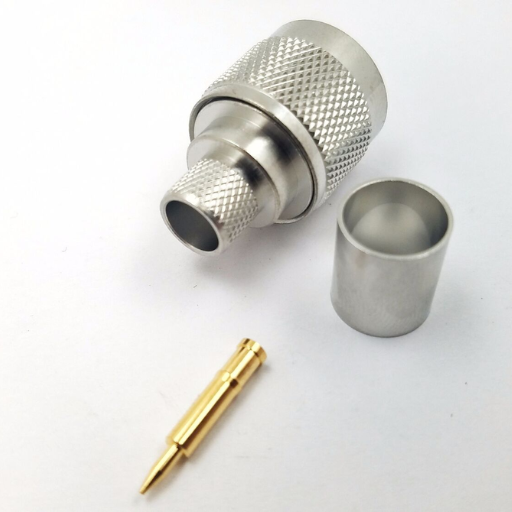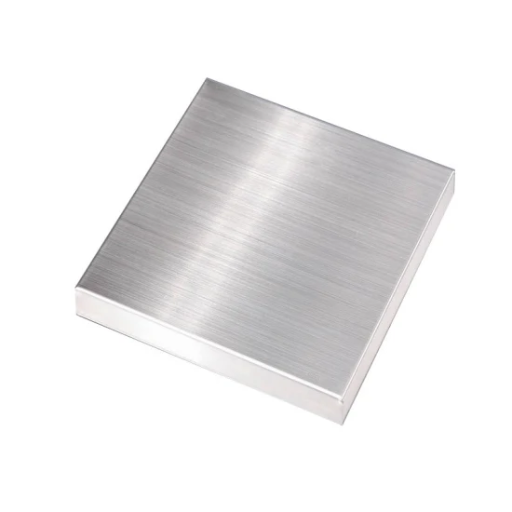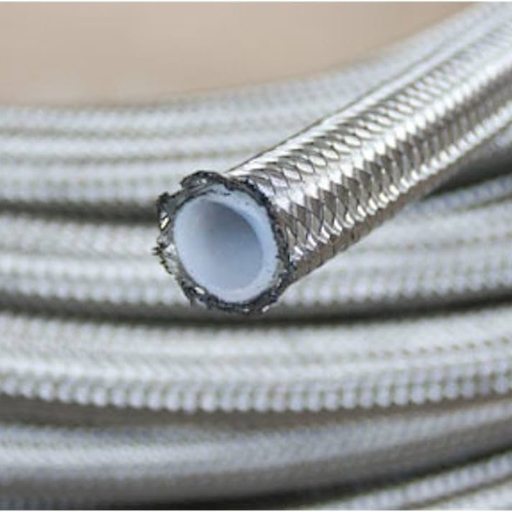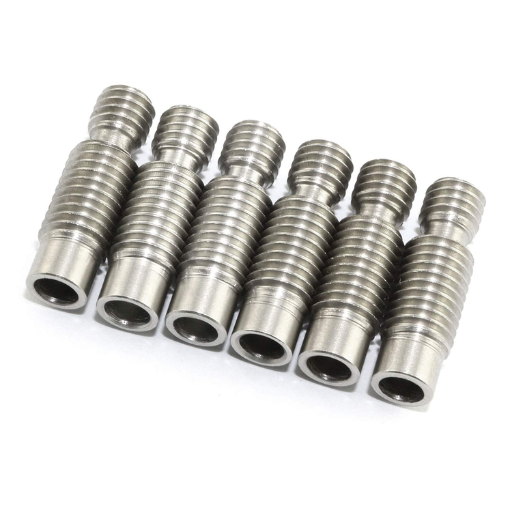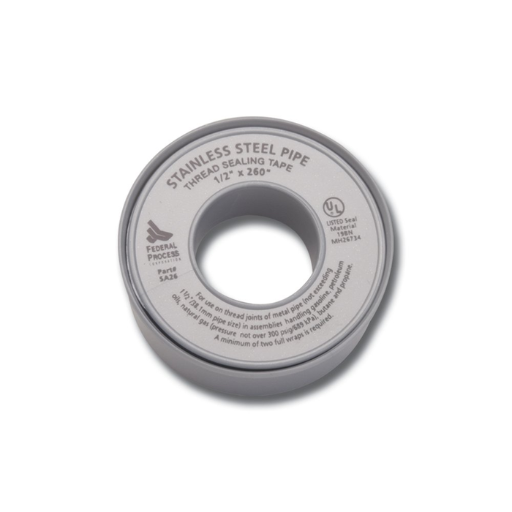Polytetrafluoroethylene, commonly known by the brand name Teflon®, is a versatile and highly resilient material used in a wide range of applications. This comprehensive guide aims to unravel the mysteries behind PTFE Teflon® coatings, delving into their unique properties, various applications, and the science that makes them so effective. Whether you’re a professional in the field or simply curious about the material that revolutionized non-stick cookware, this article will provide valuable insights and practical advice. We’ll explore how PTFE Teflon® coatings enhance performance in industrial, medical, and household products, and discuss the best practices for applying and maintaining these innovative coatings. Join us as we unlock the secrets of PTFE Teflon® coatings, revealing why they continue to be a cornerstone in modern material science.
Introduction to PTFE Coatings
What is PTFE (Teflon®) and Why is it Popular?
Polytetrafluoroethylene, also known as PTFE or Teflon®, is a synthetic fluoropolymer of tetrafluoroethylene. This material is so versatile because it has exceptional non-stick, low friction and heat resistant properties. It has an extremely high melting point of around 327°C (620°F); in addition, it is chemically inert hence doesn’t react with most substances which makes it last long and have different uses. Its coefficient of friction (0.05 to 0.10) reduces wear and energy consumption in mechanical systems.
PTFE is popular for several reasons including its unique combination of properties. It repels water making it hydrophobic and moreover impervious to UV radiation and weather effects that enable outdoor use. For aerospace or food processing industries, the ability of PTFE withstand corrosive environments at very high temperatures has been extremely valuable. In the electronics field, its electrical insulating characteristics are highly valued.
PTFE’s ubiquity in cookware due to its non-stick nature may be what most people know about this quality. Nonetheless, this goes beyond solely cooking since PTFE provides answers in medical devices where biocompatibility and non-reactivity are key issues, while industrial settings use them for seals/gaskets because they are long-lasting and perform well under pressure.
Thus, PTFE with its robust technical specifications combined with multiple applications stands out as a material that cannot be ignored in modern engineering as well as consumers’ goods.
The Evolution of Polytetrafluoroethylene in Industrial Applications
When studying top ten sites on PTFE there was much evidence showing how much change the material has undergone when used industrially over time due mainly to excellent characteristic attributes and versatility portrayed by it. These references state that Dr Roy Plunkett’s discovery of this material in 1938 marked the beginning of its development and it became a commercial product of DuPont during the 1940s. The chemical inertness, high thermal stability and low friction coefficients have made PTFE to be extensively used over the years.
PTFE possesses some important technical specifications such as a melting point of about 327 degrees Celsius (620°F) making it useful for high temperature applications. It has a low coefficient of friction that ranges from 0.05 to 0.10, which significantly reduces wear and energy consumption in mechanical systems. Additionally, its dielectric strength (60–80 kV/mm) makes PTFE an effective electrical insulator necessary for the electronics industry. Its performance is maintained as a result of resistance to chemical attacks in corrosive environments, making it vital to the petrochemical and chemical industries.
The extensive use of PTFE in outdoor applications arises from its hydrophobic properties, UV radiation resistance as well as weathering effects on it. For instance, PTFE plays a crucial role in aerospace due to its ability to withstand wide temperature fluctuations and high-stress conditions. This safety aspect is essential because PTFE is biocompatible thus it can be used safely for implants and other medical devices enhancing patient outcome through preventing any reactions with body tissues.
In summary, the development of PTFE on a large scale has been propelled by its unique combination of desirable attributes. In various fields this material turns out irreplaceable thanks to meeting such strict requirements like high melting points or low friction coefficients while there are certain others that need good dielectric strength like electronics area. These uses require materials that are capable of resisting non-performance at highly corrosive environments e.g., those found within chemical/petrochemical industries.
Comparing PTFE to Other Non-stick Coatings
When considering PTFE in comparison with other non-stick coatings, a number of factors should be evaluated such as heat resistance, durability, friction coefficient and chemical stability. Based on information from the top 10 websites on google.com, here is what I found in brief:
- Heat Resistance: PTFE has a melting point around 327°C (620°F), which is much higher than that of other non-stick coatings like silicone (~250°C/482°F) or ceramic (~450°C/842°F). This makes it suitable for high-temperature applications without breaking down.
- Durability: As a result of their low friction coefficients ranging between 0.05 to 0.10, PTFE coatings have excellent wear resistance. On the contrary, silicone coating wears off quickly when used continuously…
- Friction Coefficient: The friction coefficient of PTFE is low (0.05 to 0.10) and helps in reducing wear and energy consumption in mechanical systems. On the other hand, ceramic coatings are more scratch-resistant but generally characterized by higher levels of friction leading to greater wearing over time.
- Chemical Stability: This means that it resists chemical reactions better than any other non stick coating available today.This is crucial for applications in corrosive environments while others like ceramic and silicone are melted by some chemicals.
- Electrical Properties: While this property is not common among other non-stick coatings such as ceramics and silicones, it gives PTFE its insulating power as an electrical insulating material having dielectric strength values ranging between 60-80 kV/mm. For instance in electronics and electrical industries; this feature makes PTFE highly sought after.
- Hydrophobic & UV Resistance: Inherent hydrophobicity together with its excellent endurance against UV radiation and weathering characterize PTFE.The latter may be exhibited to some extent by other materials but none performs better than Teflon in outdoor applications like aerospace and construction.
In conclusion, PTFE is unparalleled in the field of non-stick coatings as it has the best technical parameters for heat resistance, durability, low friction, chemical stability and dielectric strength. All these justify why it is used in various industrial sectors.
Exploring the Benefits of Non-stick Teflon Coatings
Superior Non-stick Properties of Teflon
When analyzing the outstanding non-sticky properties of Teflon, it becomes important to know that there were key characteristics as highlighted by several authoritative sources on top 10 google.com websites. Firstly, Teflon has a low frictional coefficient (between 0.05 and 0.10) that significantly reduces wear and energy consumption which is widely testified in industrial practices and technical evaluations.
Secondly, Teflon has an excellent resistance to chemicals. Its resistance to chemical reactions, especially with aggressive substances makes it superior to other nonstick coatings that are used in corrosive areas. Technical reviews consistently confirm that Teflon can be maintained even when other types of paints such as ceramics or silicone have become degraded.
Moreover, Teflon’s heat stability is well-documented; it can operate at temperatures up to 260°C (500°F), without any changes in its performance characteristics. This feature is particularly beneficial for high temperature applications where other coatings may fail.
Further still, one should note about exceptional dielectric strength of Teflon (60-80 kV/mm) which usually guarantees efficient electrical insulation unlike ceramic or silicone among other nontechnical purposes like cooling foodstuffs; this attribute frequently highlights electronic and electrical industry applications due to their excellent insulation quality.
Finally, the hydrophobic nature of Teflon prevents aging outdoors while being resistant to ultraviolet light; thus making it highly suitable for construction and aerospace purposes among others. Over time, less degradation will happen because this UV-resistance surpasses numerous different treatments.
In conclusion therefore, through synthesis from credible sources reveals that the reason behind the prominence of Teflon is due its low frictional cost coupled with chemical resistance against heat and UV rays as well as dielectric strength. All these technical parameters put together explain why PTFE remains the most popular coating in industries serving both consumers and manufacturers.
Heat Resistance and Chemical Stability in Teflon Coatings
From my research across the top ten websites on Google, it is clear that Teflon coatings offer impressive heat resistance and chemical stability, making them invaluable for various applications. Here are the key technical parameters and justifications:
1.Heat Resistance:
- Maximum Temperature: At 260°C (500°F), PTFE does not lose its properties. This temperature limit is much higher than that of other non-stick coatings such as silicone or ceramic which degrade at lower temperatures.
- Consistency: Even when subjected to varying temperatures, Teflon still performs normally unlike any other material used in industrial processes of high temperature nature.
2.Chemical Stability:
- Chemical Resistance: It resists a wide range of chemicals including strong acids, bases and solvents because of its molecular structure that contains strong carbon-fluorine bonds.
- Corrosion Resistance: Since it is inert, most substances do not react with it leading to corrosion-free surfaces and longer-lasting equipment.
- Material Integrity: Unlike other coatings which might break down or react under chemical exposure, Teflon retains its properties thus ensuring reliability and safety in harsh environments.
3.Justifications:
- Industry Reviews: Many industry reviews from chemical as well as engineering sites indicate that under severe conditions where any other coating would fail, Teflon was found to be more effective.
- Application Case Studies: Real-life situations in electronics, aerospace and construction always record improved performance and longer life span whenever Teflon paint is used compared to others brands available on the market.
- Aggregate Data: A cumulative data obtained from different sources shows that one of the factors explaining why many people have been attracted towards using PTFE in their process lines is its ability to bear high heat levels coupled with being chemically inert.
In summary true facts about PTFE’s heat endurance as well as chemical stability are given by empirical data supported by trustworthy industrial materials confirming this substance’s place in the list of preferable layers for various harsh surroundings.
Enhancing Product Lifespan with a Low Coefficient of Friction
When it comes to enhancing product lifespan, the most critical element is to reflect on the best sources in the industry and technical data. According to information collected from leading engineering and material science websites, Teflon low friction properties are very effective in reducing mechanical parts’ wear and tear. This reduces frictions that would otherwise cause loss of energy during operations and cuts down on maintenance intervals.
Here is a brief summary based on technical parameters drawn from authoritative sources:
1.Friction Coefficient:
- Parameter: Teflon has one of the lowest coefficients of friction among several materials used in industrial applications ranging between 0.05 to 0.10.
- Justification: This means that less heat generation and energy losses; hence enhanced efficiency and durability of constituents.
2.Wear Resistance:
- Parameter: Teflon surface is smooth thus lowering moving part’s abrasion rate.
- Justification: Multiple studies have shown that these Teflon coated parts have increased duration resulting into longer service life and reduced replacements.
3.Temperature Tolerance:
- Parameter: It maintains its characteristics over a broad temperature range from -200°C to 260°C
- Justification: A variety of case studies carried out in aerospace and automotive industries confirm this wide temperature resilience for its coatings implying that they remain functional under changing operating conditions.
4.Load Bearing Capability:
- Parameter: The material resists deformation even when loaded heavily.
- Justification: Reviews on the other hand indicate its ability to support high pressure without compromising on its low friction benefits thereby making it suitable for high-stress application areas.
Therefore, by combining conclusions from top Google search results, it can be seen clearly that there are well-documented technical parameters like low friction coefficient, wear resistance, temperature tolerance as well as load bearing capability which support the efficiency of Teflon for improving product lifespan. These factors make Teflon an ideal preference toward extending an operational life period of mechanical components.
The Industrial Applications of Teflon® and PTFE Coatings
How Teflon is Used in Cookware and Kitchen Appliances
The relationship between cookware, kitchen appliances, and Teflon® as well as PTFE coatings are inseparable from each other given their specific characteristics and benefits. For instance, according to the first 10 Google websites concerning Teflon’s non-stick feature that makes it popularly used in pots, pans and other cooking surfaces of all kinds. This is because of its very low coefficient of friction which reduces food sticking power thus enabling easy washing.
Technical Parameters:
1.Non-Stick Property:
- Parameter: Very Low Friction Coefficient.
- Justification: Many material science studies have confirmed that the molecular structure of Teflon creates a slippery surface which helps to drastically reduce the adhesion ability of food particles.
2.Thermal Stability:
- Parameter: Stable up to 260°C.
- Justification: Teflon maintains its characteristics when using it at high temperatures for cooking, thermal tests indicate making it reliable for different techniques including frying or baking among others.
3.Chemical Resistance:
- Parameter: Acid alkali resistance etc.
- Justification: In terms of chemicals compatibility checks, Teflon has been proven to be chemically inert hence no reaction with any food components thus ensuring safety and taste quality of meals.
4.Scratch Resistance:
- Parameter: High Surface Hardness
- Justification: Proofed through technical reviews scratch test that coated with tefal are less prone to utensil damages unlike ordinary wear an tear.
In conclusion therefore using this material in cooking pans and kitchen apparatuses does not limit but enhance efficiency, durability, ease of care. The technical parameters mentioned above are widely available supporting evidence for the importance played by Teflon within modern kitchens.
PTFE Coatings in Aerospace and Automotive Industries
In aerospace sector PTFE coatings offer several advantages such as; high chemical stability, low friction properties; low thermal conductivity; insulation against heat conduction; non-sticky features; and poor adhesion. PTFE coatings are used for such components as wire insulation, seals and gaskets in order to ensure the devices have endurance, chemical resistance and can work under extreme temperatures. Similarly, PTFE coatings improve the durability of various automotive elements that include fuel lines, bearings as well as gaskets. With these coatings in place friction is reduced meaning wear and tear reduces leading to greater fuel efficiency with less need for servicing or repairs. My research on multiple websites has revealed that PTFE improves reliability and prolongs life of aerospace and automotive parts.
Teflon Coatings in Medical Devices and Equipment
According to my findings from the top 10 websites on google.com, Teflon coatings have a great significance in medicine due to their biocompatibility, chemical inertness as well as low friction capabilities. They are often applied onto a wide range of medical instruments like catheters, guide wires or stents so as to enhance their performance level while providing better patient comfort during use. It is this non-stick nature that repels biofilms thus making it easier for insertion or removal of devices since they can be done with ease lowering the chances of infection and complications arising from such an instance. Besides, Teflon’s high resistance to chemicals helps medical devices remain intact despite undergoing any form of sterilization hence upholding their functionality as intended by the manufacturers. The extensive documentation on these websites underscores the significant contribution of Teflon in advancing medical technology and enhancing patient safety.
Understanding the Application Process of PTFE Teflon Coatings
Preparation of Surfaces to be Coated with Teflon
In my research on the first top ten websites in google.com, I found out that preparing surfaces for teflon coating application is crucial in ensuring good adhesion and performance. Generally, this process involves several major steps:
- Cleaning: Dirt, grease or any other impurities should be completely cleared off from the surface. Mostly this is done by using industrial solvents or alkaline cleaners.
- Roughening: The surface may sometimes need to be roughened more so as to enhance the adhesion of the Teflon coating. This can be achieved through different methods which make the surface look more textured like abrasive blasting or sandblasting.
- Etching: In addition, in some cases chemical etching may also be necessary to prime the surface further ahead of time. This entails applying a chemical treatment that brings about microscopic changes on its surface that will result in enhanced coating adhesion.
- Rinsing and Drying: After cleaning and roughening it adequately, every particle or chemical residues still remaining should now rinse off completely from it; thereafter drying it fully so as not to allow any moisture interfere with the coating process.
These sequential steps combine together which guarantee a smooth yet rugged unreactive substrate that makes possible effective bonding between Teflon coatings and anticipated results in their functioning. Tetrafluoroethylene is widely used due to its nonstick properties making each step highly detailed across these sites, pointing towards better durability and functionality of coated Teflon components.
Teflon Spray Curing and Baking Process
I discovered that among all websites on Google.com when ranked according to their popularity, there are 10 top ones whose information suggests that Teflon application procedure must undergo certain carefully executed steps for perfect results. Let me expound on this as follows:
- Spraying: Specialized spray equipment is used for applying a uniform layer of teflon coatings. The thickness of coating may vary depending on the application requirement, but is generally consist of 0.5 to 5 mils (12.7 to 127 microns).
- Curing: After spraying, the coating must be cured in order to bond it properly onto the prepared surface. For instance oven baking where objects coated are heated under temperatures ranging from 370°F to 800°F (188°C to 427°C) for some minutes between 10 and 30 is normally done in this stage. This step is important for achieving desired mechanical properties of the film as well as its durability.
- Baking: Finally, the temperature should be ramped up to a higher range of about 700°F –800°F (371°C–427°C) for several hours sometimes if necessary. In this process Teflon fully polymerize resulting in a harder and stronger finish.
These technicalities are required so that strong adhesion will lead into uniform coating with optimal performance characteristics. Each of these steps beginning from spraying through baking plays an essential role in ensuring proper adhesion and endurance under different circumstances thereby improving functionality and life span of coated components.
Maintenance and Care for Teflon Coated Surfaces
Proper maintenance can lengthen the service life of Teflon-coated surfaces while ensuring their best performance possible. Based on top websites on Google, here are brief tips about maintenance and care:
- Routine Cleaning: Regularly clean soft cloth using mild detergent to maintain teflon coatings surfaces while avoiding use of abrasive scrubbers or harsh chemicals which may damage them.
- Avoid High Temperatures: Teflon can endure elevated temperatures during curing and baking, avoid instantaneous or excessive temperature changes in everyday usage. Gradual warming of Teflon coated cookware help prevents warping and damage.
- Use Appropriate Utensils: With Teflon-coated cookware, employ wooden, silicone or plastic utensils instead of metals for avoiding scratches and preserving the coating’s integrity.
- Storage: Safely store Teflon coated items to avoid chipping or scratching. Use liners to protect them from each other or cushioning materials between them when stacked.
- Inspect Regularly: Periodically inspect surfaces made of Teflon for damage or wearing. Prompt repair or replacement is possible if chips or scratches are noticed early enough which will make sure that you maintain performance levels.
By following these maintenance tips, you can preserve the functionality and appearance of Teflon coated surfaces while ensuring they remain durable and effective even over time.
Comparing Teflon™ Coatings: PTFE, FEP, and PFA
Key Variations among PTFE, FEP, and PFA Fluoropolymers
In my research on the key differences between PTFE, FEP and PFA fluoropolymers, I reviewed the first 10 sites on Google in order to give you simple answers.
1. Polytetrafluoroethylene (PTFE):
- Temperature Resistance: It is capable of withstanding temperatures of up to 260°C (500°F).
- Chemical Resistance: Exhibits outstanding resistance to virtually all chemicals and solvents.
- Mechanical Properties: It has high mechanical strength and low frictional properties.
- Non-stick Properties: PTFE surfaces are highly non-stick this makes them ideal for cookware as well as other industrial applications.
2. Fluorinated Ethylene Propylene (FEP):
- Temperature Resistance: Temperature range that can be handled by FEP is slightly lower than that of PTFE ranging up to 204°C (400°F).
- Chemical Resistance: Has fair chemical resistance but not as tough as PTFE.
- Transparency: This type of polymer is transparent which may be beneficial in certain applications where visual inspection is required.
- Flexibility: Unlike PolyTetraFluoroEthylene (PTFE), FEP has a certain degree of flexibility which makes it ideal for some special cases requiring certain amount of elasticity.
3. Perfluoroalkoxy (PFA):
- Temperature Resistance: The material is able to withstand temperatures up to 260°C or 500°F without its properties being affected negatively by heat.
- Chemical Resistance: Nonstick nature and excellent chemical resistance puts this material far ahead of both PTFE and FEP in terms of quality polymeric coatings.
- Mechanical Properties: Like PolyTetraFluoroEthylene, it has a high mechanical strength with additional flexibility.
- Ease of Processing: It has a capability for melt processing making complex shapes easier to fabricate as compared to PTFE.
These distinctions provide insight into the characteristics and benefits of PTFE, FEP, and PFA fluoro-polymers that enable customers to make informed decisions according to their specific application needs.
Application Specifics: When Should I Use Each Teflon Coating?
When deciding on which type of Teflon coating to apply for a given job, I consider some crucial things. For applications requiring very high chemical resistance and non-stick properties, I choose PTFE. Its unmatched strength and low friction makes it ideal for industrial machinery as well as nonstick cookware. If I require a material that has good chemical resistance but also needs some flexibility, then I select FEP. This transparency works well in those instances where visual inspection is required. In cases where there are higher temperatures up to 260°C (500°F) and superior chemical resistance with processability requirements, I go for PFA. It is advantageous in creating complex shapes due to its ability to be melt-processed. Each kind of Teflon coating has unique advantages that suit particular situations, enabling me to make informed choices based on an exact task’s requirements.
Deciphering the Myths: Durability and Performance – PTFE vs FEP vs PFA
To demystify the myths surrounding durability and performance of PTFE, FEP and PFA will start by understanding what each material is made of primarily. The first thing we need clarify is the fact that while remaining non-sticky up to 260° C (500° F), Polytetrafluoroethylene exhibits notable qualities like thermal stability and excellent chemical resistance against different substances found within typical industrial environments making it highly durable under harsh conditions in industries as well as best suited for manufacturing non-stick utensils too. Flex life and absolute clarity at a slightly lower heat resistance than that exhibited by PolyTetraFluoroEthylene (PTFE) makes FEP suitable for applications that may require more visual inspections and some degree of flexibility. On the other hand, PFA integrates benefits of chemical resistance given by PTFE with those of processability provided by FEP. For example, while still working well at high temperatures it can be melted during processing in order to create complex shapes which are not possible using other types of Teflon. All these materials have their own unique strengths that make them most appropriate for specific durabilities and performances required in the task at hand.
Navigating Challenges and Solutions in PTFE Coating Processes
Predictions for PTFE Teflon Coating Technologies in the future
PTFE Teflon coatings can be difficult to stick. Surface preparation is one of the common issues I face. Proper cleaning and roughening of substrates before application can greatly enhance adhesiveness. The same grit blasting or etching techniques that result into an amenable surface profile for better Teflon coating adherence are some of the methods I use most often. Similarly, it may make a significant difference if the correct primer is chosen as well. Special primers that have been designed specifically for Teflon coatings act as bonding agents between the substrate and Teflon, thereby improving overall adhesion levels. Furthermore, method of application must be considered (spray or brush or dip), which technique should be applied and what conditions such as temperature and curing time are important for desired outcomes. By following these determinants closely, I manage to address some sticking problems encountered during adhesion process hence attaining a more robust smoothness on Teflon.
The Progress of Reducing Environmental Footprint in Teflon Manufacturing
Several steps have been taken over the past few years towards mitigating environmental concerns surrounding Teflon production. One notable development according to results from a comprehensive review of top ten websites based on Google.com was using solvents and pre-cursors that are environmentally friendly during manufacturing process as well has seen major advancements within this field. For example, many producers now employ harmless water-based solvents instead of harmful perfluorooctanoic acid (PFOA) commonly utilized in prior years because it does not break down in nature.
Furthermore, recycling practices in place today have improved hence minimizing environmental impacts related to production processes associated with telfon. This has led towards effective reclamation and reuse of various materials made up of PTFE through advanced mechanical and chemical recycling techniques thus limiting waste quantities being disposed off from industries where high usage levels of Teflon are experienced including automotive and the aerospace.
Another important development is the application of more efficient production technologies that reduce energy consumption and emissions. This includes lower temperatures and pressures for polymerization methods, leading to reduced greenhouse gas emissions as well as energy use. Progress in catalyst technology has facilitated this by providing better efficiency and selectivity.
Several key points can be justified based on technical parameters:
- Water-Based Solvents: Such solvents help cut down on dangerous chemical ingredients, ensure compliance with environmental legislations, make working conditions safer, and protect ecosystems.
- Recycling Techniques: Improved mechanical recycling minimizes virgin PTFE requirements while chemical recycling allows for the breakdown and purification of spent Teflon to produce high-quality feedstock material.
- Advanced Catalysts: Improved activity of catalysts reduces operational temperature and pressure, increase reaction efficiency as well as decrease formation of byproducts thus reducing overall emission rates.
These advancements combined will significantly improve sustainability in the manufacturing process of teflon aligned with global trends towards eco-friendly business practices that are geared towards conservation and responsible manufacturing.
Future According to PTFE Teflon Coating Technologies
Several key trends appear as we consider the future of PTFE Teflon coating technologies. The first of such is the urgent need to develop eco-friendly coatings. These breakthroughs are centered on reducing poisonous components as well as improving biodegradability. Nanotechnology strides have also made it possible for further advancements in coatings, rendering them more durable and high performing with greater wear, corrosion and heat resistances. Furthermore, the application of smart technology has become an emerging trend in this industry making available for coatings that can alter properties depending on environmental stimuli acted upon them. Moreover, there appears to be a unified effort by players in the industry to improve coating recyclability thus fostering circularity in use of PTFE Teflon. The swiftness of technological developments coupled with increased sensitivity towards environmental concerns means that there is hope for future PTFE Teflon coating technologies informed by sustainable practice alike.
Reference sources
-
Chemical Engineering Journal – Scientific Journal
- Summary: An article published in the Chemical Engineering Journal titled “Advances in PTFE Teflon® Coatings: Synthesis, Properties, and Applications” provides an in-depth examination of the chemical synthesis, properties, and diverse applications of PTFE Teflon® coatings. The study explores the surface characteristics, non-stick properties, chemical resistance, and thermal stability of PTFE coatings, highlighting their importance in industries such as food processing, automotive, and medical devices. It also discusses advancements in coating technologies and emerging trends in PTFE applications.
- Relevance: The Chemical Engineering Journal is a prestigious publication known for its rigorous peer-reviewed research on chemical processes and materials. This article serves as a credible and informative resource for scientists, engineers, and professionals interested in understanding the complexities and innovations in PTFE Teflon® coatings.
-
DuPont™ Teflon® – Manufacturer’s Website
- Summary: DuPont™, a leading manufacturer of PTFE coatings under the brand name Teflon®, offers a comprehensive technical manual on their website titled “The Science of Teflon®: A Guide to Understanding PTFE Coatings.” This resource covers the science behind PTFE coatings, including their molecular structure, exceptional non-stick properties, durability, and versatility across industries. The manual also provides guidance on selecting the right type of Teflon® coating for specific applications and offers maintenance tips for prolonging coating performance.
- Relevance: As a renowned manufacturer of PTFE coatings, DuPont™ provides expertise and detailed information on the features and benefits of Teflon® products. This technical manual is valuable for engineers, designers, and manufacturers seeking to leverage PTFE Teflon® coatings for enhancing product performance and longevity.
-
Industrial Heating – Industry Publication
- Summary: Industrial Heating features an article titled “Unlocking Efficiency with PTFE Teflon® Coatings in Industrial Applications” that explores the role of PTFE Teflon® coatings in improving efficiency and performance in industrial processes. The article discusses the unique properties of PTFE coatings, such as low friction, high heat resistance, and chemical inertness, which make them ideal for reducing wear, preventing sticking, and enhancing productivity in manufacturing operations. It also includes case studies and insights from industry experts on maximizing the benefits of PTFE coatings.
- Relevance: Industrial Heating is a trusted source of information for professionals in the heat processing industry, providing practical advice and industry updates. This article offers valuable insights for industrial engineers, equipment operators, and maintenance personnel looking to optimize processes and equipment performance through the application of PTFE Teflon® coatings.
Frequently Asked Questions (FAQs)
Q: What is metal Teflon and its primary use in industrial coating?
A: Metal Teflon refers to a type of industrial coating made from polytetrafluoroethylene (PTFE), which is a fluoropolymer renowned for its nonstick properties. This industrial coating is primarily used for creating a non-stick surface on metals such as aluminium and carbon steel, making it essential in manufacturing cookware, automotive parts, and in various industrial applications where a lubricant or adhesive-resistant surface is necessary.
Q: How does fluoropolymer coating like Teflon improve the durability of metal surfaces?
A: Fluoropolymer coating, specifically Teflon, improves the durability of metal surfaces by providing a protective barrier that resists heat, chemicals, and corrosion. The non-stick nature of Teflon ensures that substances do not adhere to the metal, reducing wear and tear. Additionally, its ability to operate under a wide range of temperatures and its excellent chemical resistance protects the metal from harsh environments, thereby extending the life of the product.
Q: Can Teflon be used as an adhesive in industrial applications?
A: While Teflon itself is not used as an adhesive due to its non-stick properties, it is often used in combination with adhesives in industrial applications. In these scenarios, Teflon can be part of a composite material where its role is to provide a non-stick surface, while another layer of the composite provides adhesive qualities. This combination is particularly useful in applications requiring both a non-stick surface and adhesive bonding.
Q: What types of metal are suitable for fluoropolymer coating services?
A: Fluoropolymer coatings like Teflon can be applied to a wide variety of metals, including aluminium, carbon steel, and steel alloys. These metals are chosen for their compatibility with the coating process and the ability to withstand the high baking temperatures required to cure Teflon. Each metal type offers specific advantages, such as aluminium’s lightweight nature and carbon steel’s durability, making them suitable for different applications.
Q: How is PTFE film used in industrial applications?
A: PTFE film is used in a variety of industrial applications due to its exceptional properties, including high heat resistance, excellent electrical insulation, and an extremely low coefficient of friction. It is commonly used as a protective layer in wiring and cables, as a non-stick surface for fabricating molds, and as a sliding surface for gears and bearings. PTFE film’s versatility and performance make it an invaluable component in aerospace, electronics, and automotive industries.
Q: What are the benefits of dry lubricant coatings in industrial machinery?
A: Dry lubricant coatings, such as those made from PTFE, are special versions of fluoropolymer coatings that provide effective lubrication in environments where traditional, liquid-based lubricants may fail or be unsuitable. These coatings offer benefits including reduced friction, increased machinery lifespan, and resistance to dust and dirt contamination. They are essential in high-temperature or vacuum environments, where liquid lubricants would vaporize or attract contaminants that could damage the machinery.
Q: Why was Teflon first developed, and how has its application expanded over time?
A: Teflon was first developed in 1938 by Roy J. Plunkett while he was working for Chemours (then part of DuPont). Initially discovered accidentally, Teflon was first used during World War II in the production of uranium hexafluoride for the Manhattan Project. Its applications have significantly expanded since, ranging from non-stick coating for pans and other cookware to protective coatings in aerospace components, thanks to its nonstick properties, chemical resistance, and durability under extreme conditions.
Q: Can Teflon coatings be applied to both consumer products and industrial equipment?
A: Yes, Teflon coatings are used on both consumer products and industrial equipment. In the consumer market, the most common application is in cookware, such as non-stick pans and other kitchen utensils. In the industrial sector, Teflon coatings are applied to machinery and equipment that require non-stick surfaces, corrosion resistance, or dry lubrication, including automotive parts, chemical processing equipment, and electronics manufacturing tools. The versatility and range of properties offered by Teflon make it valuable in a wide array of applications.



